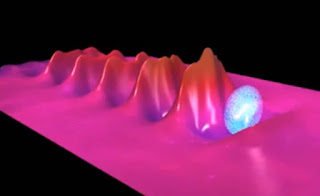Topics: High Energy Physics, Laser, Particle Physics, Plasma Physics
In the era of xenophobic flight to suburbs, they termed the cities "doughnuts," meaning they were empty of value, like doughnut holes; the suburbs sweeter and of more worth.
It's not that good science is not being done here in the US: it's no longer what we're known for primarily. Now, it's creation museums, conspiracy provocateurs; reality TV stars running for president. We are becoming a doughnut hole nation.
Accelerator physicists in five European countries are developing plans for the world's first high-energy laser plasma accelerator facility for use by science and industry. If built, the facility will deliver high-quality beams of electrons with energies up to 5 GeV. The EuPRAXIA consortium includes researchers at 16 institutes in the European Union (EU), including the DESY lab in Germany, the Italian National Institute for Nuclear Physics, the French national research council and the Science and Technology Facilities Council in the UK. EuPRAXIA also has 18 associate partners worldwide, including the Lawrence Berkeley National Laboratory (LBNL) in the US, RIKEN in Japan and CERN in Switzerland.
The idea of laser plasma acceleration has been around for more than 30 years, and in 2014 physicists using the LBNL's Berkeley Lab Laser Accelerator managed to accelerate electrons to energies as high as 4.2 GeV. The process involves firing very intense laser pulses into a gas to create a plasma. As a pulse travels through the gas, it rips electrons away from the positive nuclei, therefore creating a huge electric-field gradient in its wake. This gradient can be thousands of times greater than that found in conventional particle accelerators – and therefore can accelerate electrons to high energies over much shorter distances than conventional facilities.
Physics World: Consortium sets out to build European laser plasma accelerator
Hamish Johnston

Comments